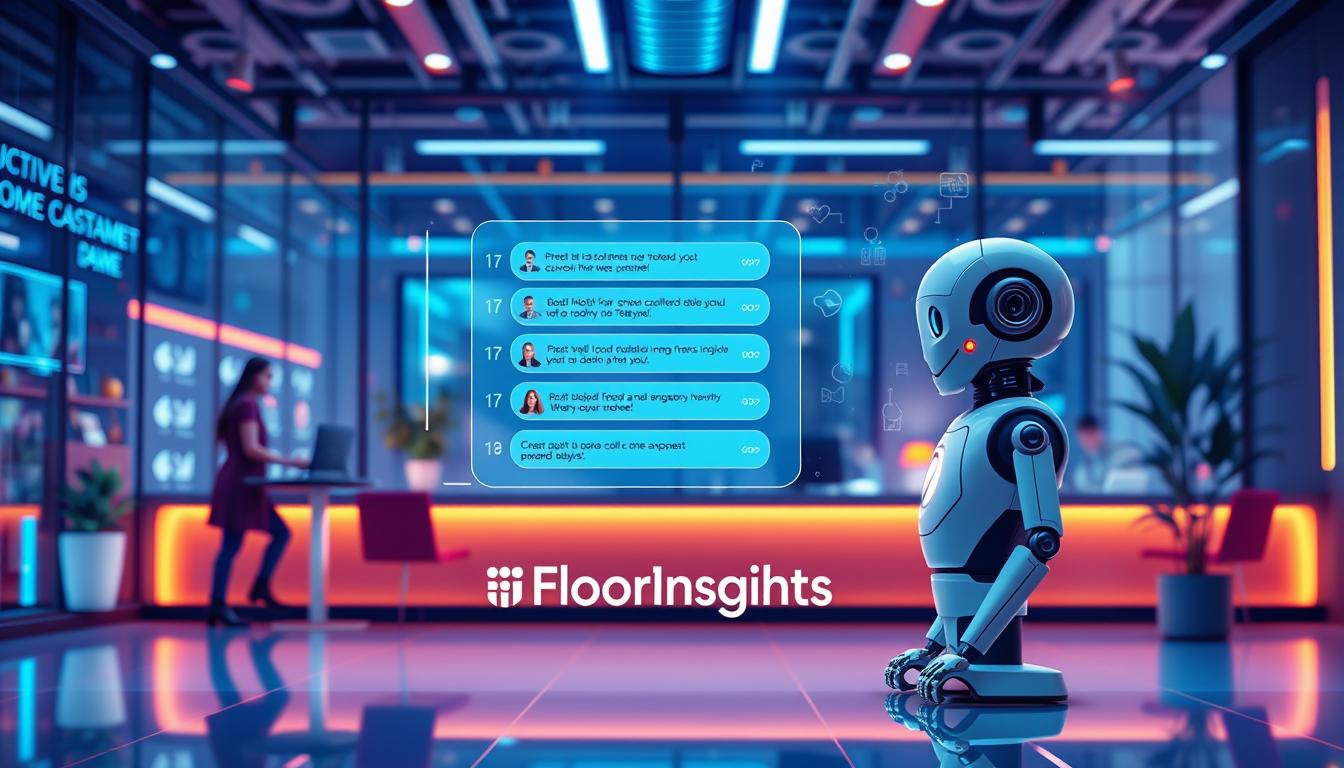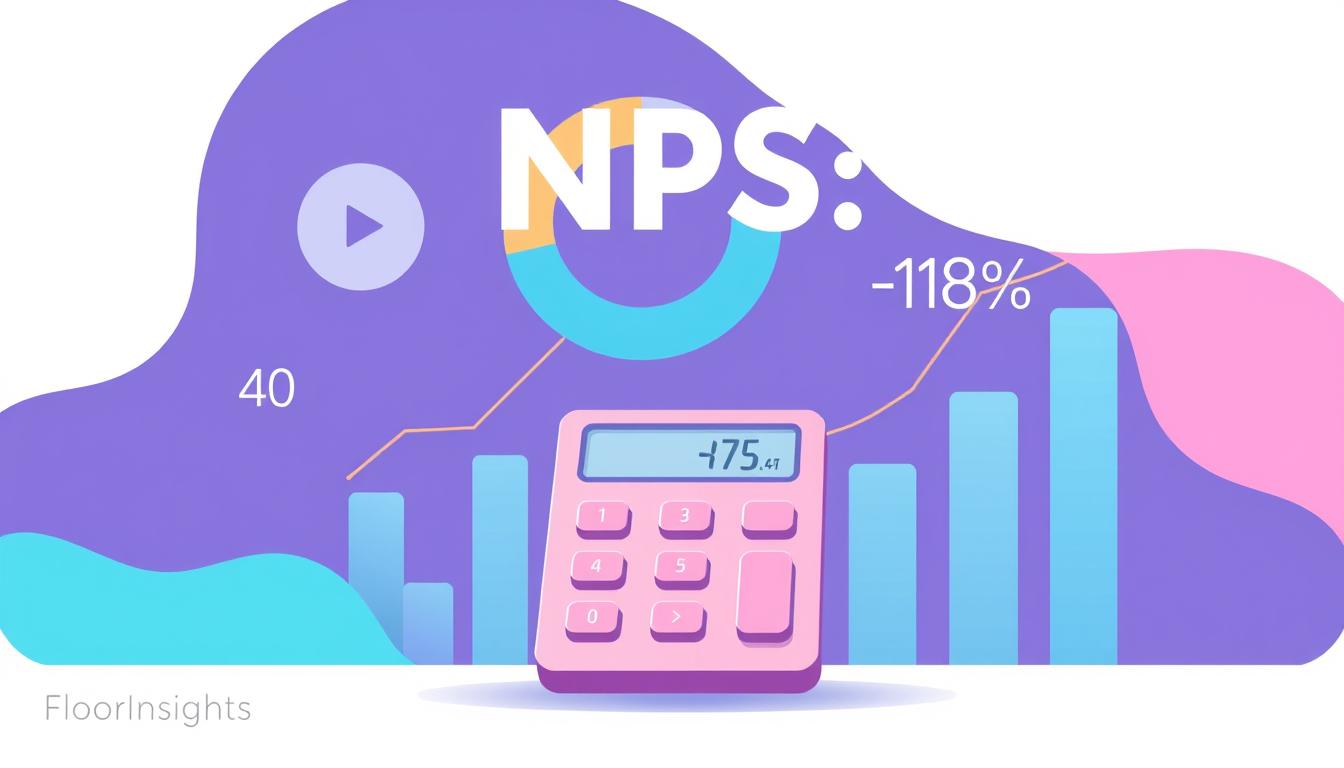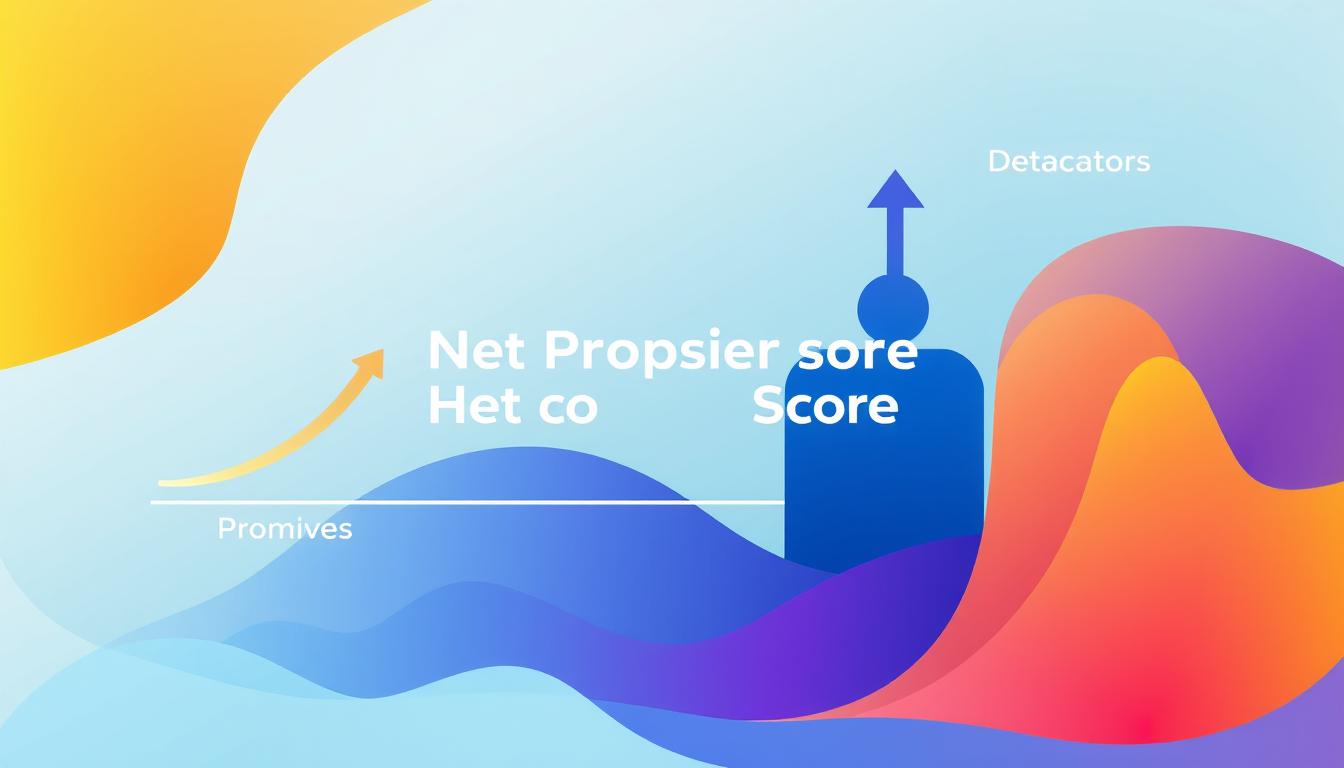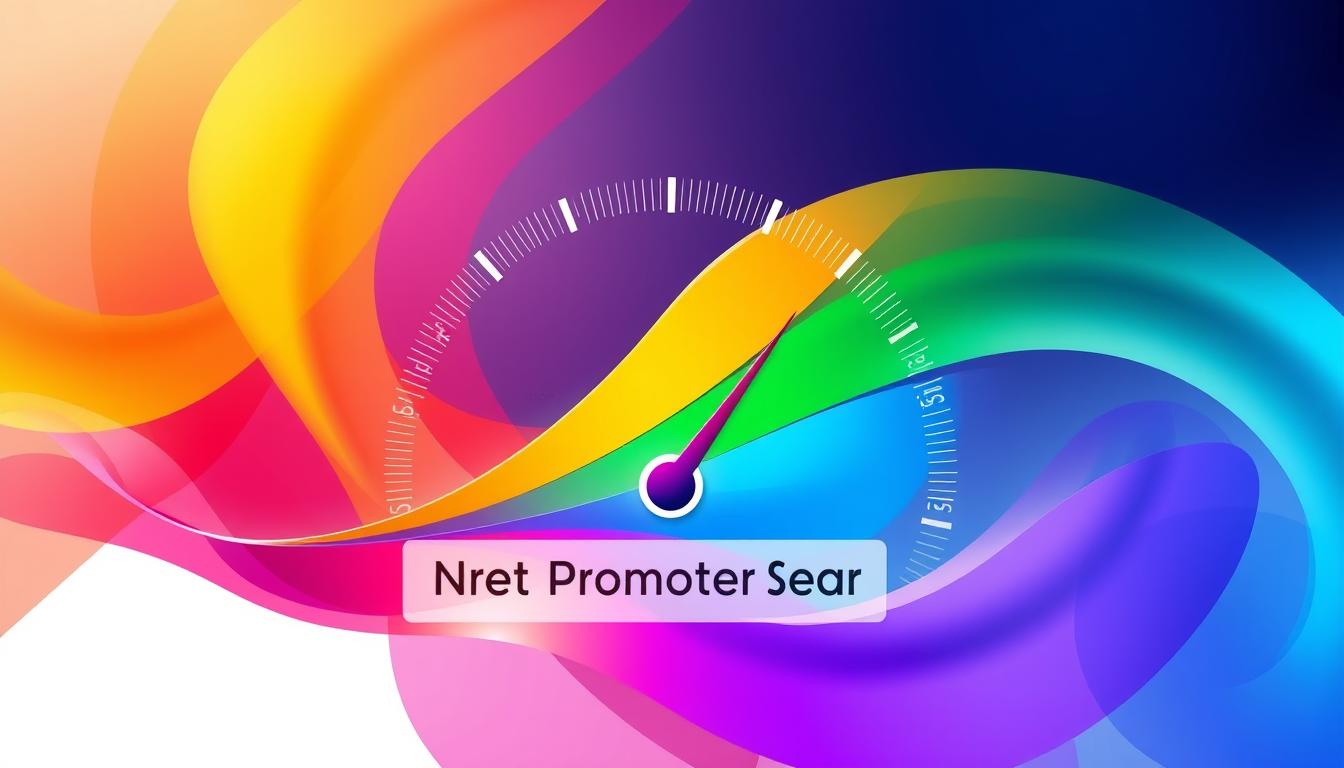As businesses strive to enhance their customer service innovation, combining Net Promoter Score (NPS) with chatbot technology is emerging as a powerful strategy. According to Bain & Company, firms leveraging NPS experience growth rates more than double those of their competitors. As highlighted by Gartner, chatbots are becoming increasingly prevalent in customer service. Furthermore, Salesforce’s “State of the Connected Customer” report underscores the critical role of customer feedback collection in shaping customer-centric strategies.
Key Takeaways
- Integrating NPS with chatbot technology can significantly improve customer feedback collection processes.
- Companies using NPS tend to grow at more than twice the rate of their competitors.
- Chatbots are increasingly used in customer service operations for their efficiency.
- Customer feedback is crucial for developing customer-centric business strategies.
- Combining these technologies enhances overall customer service innovation.
Introduction to Net Promoter Score and Chatbots
The Net Promoter Score (NPS) is a highly regarded loyalty metric introduced by Fred Reichheld in a 2003 Harvard Business Review article. It has since become a cornerstone in measuring customer loyalty and predicting business growth. Meanwhile, the rise of chatbots has revolutionized customer interaction, making it easier for companies to engage with clients in real time.
Businesses today recognize the profound impact of effective customer experience management. By blending the strengths of NPS with the innovative capabilities of chatbots, companies can gain deeper insights into customer sentiments. A report by Business Insider reveals a growing reliance on chatbot applications in sectors ranging from finance to health services. This trend signifies the expanding role of chatbots in enhancing customer interactions and gathering meaningful feedback.
To further understand how these tools work symbiotically, we need to explore their individual mechanics. The Net Promoter Score calculates customer loyalty on a scale of 0 to 10, while chatbots utilize artificial intelligence to facilitate interactive and personalized experiences. When integrated, these technologies can streamline customer experience management and refine the feedback collection process.
| Tool | Core Functionality | Impact on Customer Experience |
|---|---|---|
| Net Promoter Score | Measures customer loyalty | Identifies promoters and detractors |
| Chatbots | Provides real-time interaction | Enhances engagement and response rates |
Understanding both the Net Promoter Score and chatbots sets the stage for their combined application, offering enhanced insights and improved response rates. Leveraging these tools collaboratively can transform how businesses manage and improve their customer relationships, ultimately driving growth and satisfaction.
Benefits of Using Chatbots for Customer Feedback Collection
Deploying chatbots to gather customer feedback has revolutionized the way businesses interact and collect data. These AI-driven tools have proven instrumental in making the process more efficient and insightful.
Efficiency in Data Collection
One of the key advantages of using chatbots is their efficient data collection capabilities. According to an MIT Technology Review study, chatbots streamline the process, reducing the need for extensive human involvement. By automating data capture, businesses can swiftly gather and analyze feedback, resulting in faster response times and minimized operational costs.
Real-Time Feedback
The ability to receive real-time feedback with chatbots is a game-changer for businesses. As highlighted by a Forbes article, chatbot interactions enable companies to make prompt decisions based on up-to-the-minute data. This immediacy ensures that businesses can address issues or capitalize on positive feedback proactively, thus maintaining higher levels of customer satisfaction.
Enhanced Customer Experience
Investing in chatbots also leads to enhanced customer interactions. A survey by PwC emphasizes that integrating AI and machine learning within chatbots creates more personalized and engaging experiences for customers. These intelligent systems can adapt to individual customer needs, offering tailored answers and solutions, which significantly enriches the overall customer journey.
| Benefit | Impact |
|---|---|
| Efficiency in Data Collection | Faster and cost-effective feedback analysis |
| Real-Time Feedback | Immediate action on customer feedback |
| Enhanced Customer Experience | Personalized and engaging interactions |
How NPS Works in Gathering Customer Sentiment
Understanding how the Net Promoter Score functions can significantly help in customer sentiment analysis and measuring loyalty metrics. Companies leverage this simple yet effective tool to gauge how likely customers are to recommend their products or services to others.
Understanding Net Promoter Score
The Net Promoter Score, commonly abbreviated as NPS, is a management tool that can be used to gauge the loyalty of a firm’s customer relationships. NPS scores range from -100 to 100, and they are derived by asking customers how likely they are to recommend the business on a scale from 0 to 10.
Research from the London School of Economics indicates that higher NPS scores are strongly correlated with organic growth. This underscores the importance of customer sentiment analysis, as businesses can better understand their performance from their customers’ perspectives.
Measuring Customer Loyalty
NPS is instrumental in measuring loyalty metrics. It segments customers into Promoters, Passives, and Detractors based on their responses. Promoters are loyal enthusiasts who will keep buying and refer others, fueling growth. Passives are satisfied but unenthusiastic customers who are vulnerable to competitive offerings. Detractors are unhappy customers who can damage your brand through negative word-of-mouth.
A Harvard Business School study demonstrates that NPS is a strong predictor of customer purchase and referral behaviors, which are key indicators of loyalty metrics.
Tracking Customer Satisfaction
Tracking customer satisfaction is another critical aspect of the Net Promoter Score. Consistently measuring NPS over time allows businesses to track customer satisfaction trends and identify areas needing improvement. The American Customer Satisfaction Index (ACSI) shows both similarities and differences when compared to NPS, providing a broader context for understanding customer feedback.
Here’s a comparative look at the two metrics:
| Aspect | NPS | ACSI |
|---|---|---|
| Purpose | Gauge loyalty and likelihood to recommend | Measure customer satisfaction |
| Scale | -100 to 100 | 0 to 100 |
| Calculation | Promoters minus Detractors | Various factors weighted and averaged |
The Role of Chatbots in Enhancing NPS Surveys
The integration of advanced AI technology has significantly transformed how businesses collect and analyze customer feedback. Utilizing chatbot survey automation enables companies to streamline the process, ensuring efficient and consistent data collection. This process not only saves time but also ensures that the data is collected seamlessly without human bias.
Automation of Surveys
Automating surveys with chatbots allows for an unparalleled level of NPS enhancement. The automation ensures that surveys can be deployed rapidly across multiple channels, reaching a broader audience without the need for manual intervention. According to studies, a significant portion of businesses are leaning towards chatbots to handle customer interactions. This shift enables organizations to scale their feedback mechanisms effortlessly, capturing insights in real-time.
Personalization in Feedback Collection
One of the most compelling advantages of using chatbots is their ability to facilitate personalized customer surveys. By leveraging AI, businesses can tailor survey questions based on individual customer profiles and previous interactions. This personalization enhances customer engagement and increases the relevance of the feedback collected. Research has shown that personalized interactions are crucial for customer satisfaction, making it a key factor in the successful implementation of chatbot technologies in feedback collection.
Integrating Chatbots with NPS for Improved Customer Engagement
Implementing chatbots in conjunction with Net Promoter Score (NPS) surveys can revolutionize how businesses engage with their customers. By seamlessly integrating these technologies, organizations can not only enhance their customer engagement strategies but also leverage more sophisticated chatbot analytics and NPS data reporting.
Optimizing Customer Interaction
Chatbots, particularly those powered by AI, offer an interactive and efficient medium for gathering customer feedback. They can conduct real-time conversations, making the process engaging and less intrusive for users. Consequently, businesses can devise more effective customer engagement strategies to retain and satisfy their clientele. A study by Deloitte Insights reveals that integrating AI with data analytics can lead to more nuanced customer insights, which helps in optimizing overall interactions.
Data Analysis and Reporting
Once the data is collected, the role of chatbot analytics becomes pivotal. These tools can process vast amounts of information swiftly, offering actionable insights. By incorporating NPS data reporting, companies can quickly identify trends and areas needing improvement. IBM’s research confirms that AI-powered chatbots can significantly refine the data analysis process, ensuring that the insights derived from NPS surveys are both accurate and actionable.
In summation, the integration of chatbots with NPS enhances not just the efficiency in feedback collection but also the depth and utility of the data analyzed. This synergy promises more robust customer engagement strategies and a clearer understanding of customer loyalty.
Case Studies: Successful Implementation of Chatbots for NPS
When examining successful chatbot implementation in the context of NPS case studies, two examples stand out as particularly instructive. These cases demonstrate the impact of chatbots on customer feedback innovation, showcasing how businesses have leveraged this technology to improve their Net Promoter Score (NPS).
A prominent NPS case study by Drift highlights a tech company’s journey to a significant NPS improvement. By deploying targeted chatbot surveys, the company could gather precise and meaningful responses from their clients. This successful chatbot implementation not only streamlined the feedback process but also identified critical areas needing improvement, resulting in enhanced customer satisfaction and loyalty.
Another exciting example comes from Intercom. Their customer success story with a retail company reveals how chatbots can be paramount for real-time feedback collection. This customer feedback innovation allowed the retail business to quickly adapt to customer needs, ultimately leading to a dramatic increase in customer retention rates. With instantaneous feedback, the company could swiftly address issues, enhancing the overall customer experience.
| Company | Industry | Chatbot Benefit | Result |
|---|---|---|---|
| Drift (Tech) | Technology | Targeted surveys | Improved NPS |
| Intercom (Retail) | Retail | Real-time feedback | Increased retention |
These NPS case studies emphasize how successful chatbot implementation can lead to substantial improvements in customer feedback processes. By integrating chatbots for customer feedback innovation, companies across various industries can effectively enhance their customer service strategies, leading to better customer loyalty and satisfaction.
Best Practices for Using Chatbots in Customer Feedback Collection
Leveraging chatbots for gathering customer feedback can provide valuable insights if implemented with the right practices. To ensure we maximize the benefits, we must focus on designing effective survey questions and maintaining stringent data privacy standards.
Designing Effective Survey Questions
An effective survey design forms the backbone of any successful customer feedback initiative. Engaging questions that are simple, clear, and open-ended encourage customers to provide meaningful responses. According to Qualtrics, best practices include:
- Asking concise questions to avoid confusion
- Using a mix of quantitative and qualitative queries
- Ensuring the questions are relevant to the customer’s experience
Crafting an effective survey design will help capture actionable insights, ultimately driving customer satisfaction and loyalty.
Ensuring Data Privacy
Ensuring chatbot data privacy is critical when collecting customer feedback. The International Association of Privacy Professionals (IAPP) emphasizes the need for transparency and security in data collection tools. Key strategies include:
- Informing customers about data usage and storage practices
- Implementing robust encryption methods
- Regularly reviewing and updating privacy policies
Prioritizing chatbot data privacy assures customers that their information is secure, fostering trust and encouraging them to share honest feedback.
By adhering to these customer feedback best practices, we can enhance the effectiveness of chatbot-integrated surveys, ensuring valuable and secure customer insights.
Challenges and Solutions in Combining NPS and Chatbots
Integrating NPS (Net Promoter Score) with chatbots presents several unique challenges. While the benefits are plentiful, many technical challenges in chatbot integration can impede successful implementation. Additionally, managing customer expectations is crucial to ensure a seamless experience during NPS surveys.
Overcoming Technical Hurdles
One of the primary technical challenges in chatbot integration revolves around ensuring that the chatbot operates smoothly across various platforms and devices. Technical glitches can disrupt the user experience and skew NPS survey results. According to a report from Forrester, common issues include compatibility problems with existing systems and difficulties in real-time data synchronization.

To tackle these challenges, it’s essential to employ robust testing and validation protocols before full deployment. Utilizing cloud-based solutions can also help in scaling the chatbot operation without significant downtime or performance issues.
Managing Customer Expectations
Beyond technical aspects, managing customer expectations is pivotal for the successful integration of chatbots in NPS surveys. Customers expect timely and personalized interactions. However, automated systems can sometimes come across as impersonal or fail to address specific customer concerns adequately.
Customer Think highlights that one way to manage these expectations is by ensuring transparency. Inform customers that they’re interacting with a chatbot and outline the benefits, such as faster response times. Regular updates and continuous improvement in chatbot sophistication can further enhance customer satisfaction.
NPS survey challenges are not just about asking the right questions but also about how these questions are delivered and when. Integrating a feedback loop where customers can express concerns about the chatbot itself can offer valuable insights into refining the system continually.
Future Trends in NPS and Chatbots Technology
The future of NPS and chatbots is poised for significant advancements as technologies like AI and machine learning become more sophisticated. As outlined in McKinsey’s research, AI is expected to revolutionize customer experience, driven by the ability to provide personalized and real-time feedback solutions. This evolution heralds an era where AI in customer feedback collection becomes the norm rather than the exception.
AI and Machine Learning Integration
The integration of AI and machine learning is set to redefine how businesses interpret and act on customer data. As suggested in an article from TechCrunch, machine learning trends indicate that algorithms will continually enhance their capability to understand customer sentiment and behavior. This will not only improve the accuracy of Net Promoter Score but also enable more targeted and effective customer engagement strategies.
Advanced Analytics and Insights
Leveraging advanced analytics can substantially deepen the insights that businesses gain from NPS data. According to a study from SAS, sophisticated analytical tools can identify patterns and trends that were previously indistinguishable. As businesses continue to incorporate advanced NPS analytics, they will be better positioned to make data-driven decisions that elevate customer satisfaction and loyalty.
In conclusion, the intersection of NPS, AI, and advanced analytics represents a dynamic frontier in customer feedback technology. By embracing these trends, we can expect to witness a profound transformation in how customer feedback is collected, analyzed, and acted upon, ensuring a more personalized and satisfying customer experience.
FAQ
What is the Net Promoter Score (NPS) and how is it beneficial?
The Net Promoter Score (NPS) is a loyalty metric introduced by Fred Reichheld in a 2003 Harvard Business Review article. It’s used to gauge customer loyalty and satisfaction by asking customers to rate their likelihood of recommending a brand to others. Companies utilizing NPS often see significant growth, as it provides actionable insights into customer sentiment and drives customer-centric strategies.
How do chatbots enhance the process of customer feedback collection?
Chatbots streamline customer feedback collection by automating surveys and capturing real-time responses. According to Gartner’s research, chatbots are becoming increasingly popular in customer service operations, offering efficient data collection, personalized interactions, and instant data analysis.
What are the key benefits of using chatbots for Net Promoter Score surveys?
Deploying chatbots for NPS surveys brings several advantages such as efficiency in data collection, real-time feedback, and an enhanced customer experience. A survey by PwC emphasizes that chatbot technology improves customer engagement by providing tailored experiences and prompt responses.
How does NPS measure customer loyalty and satisfaction?
NPS measures customer loyalty by asking respondents to rate the likelihood of recommending a company on a scale of 0-10. Scores are categorized into Promoters, Passives, and Detractors. Higher NPS scores typically correlate with greater customer retention and brand advocacy, as supported by research from the London School of Economics and Harvard Business School.
In what ways can chatbots automate NPS surveys and enhance personalization?
Chatbots can automate NPS surveys by scheduling them at optimal times and ensuring high response rates through engaging and conversational interfaces. According to Accenture, personalization is key for customer satisfaction, with chatbots leveraging AI to tailor questions based on previous interactions and individual profiles.
How does integrating chatbots with NPS optimize customer engagement?
Integrating chatbots with NPS optimizes customer engagement by facilitating seamless interactions and providing actionable insights through advanced data analysis and reporting. Deloitte Insights suggests that AI and chatbots enable more nuanced customer sentiment analysis and improved decision-making processes.
Can you provide examples of successful implementation of chatbots for NPS?
Yes, several case studies demonstrate successful chatbot implementations for NPS. Drift reported a significant increase in NPS scores for a tech company through targeted chatbot surveys. Similarly, Intercom shared a retail company’s success in gathering instant feedback and improving customer retention by using chatbots.
What are the best practices for creating effective chatbot surveys for customer feedback collection?
Best practices include designing concise and relevant survey questions, ensuring a conversational tone, and safeguarding data privacy. Qualtrics suggests that well-crafted questions can elicit more meaningful responses while the IAPP emphasizes the importance of robust data privacy frameworks in chatbot-driven feedback systems.
What are the common challenges in combining NPS and chatbots, and how can they be addressed?
Common challenges include technical issues with chatbot integration and managing customer expectations. Forrester’s report identifies solutions to technical hurdles, while Customer Think provides insights into balancing automated systems with customer needs to ensure a smooth NPS survey experience.
What future trends can we expect in NPS and chatbot technology?
Future trends in NPS and chatbot technology will likely involve deeper integration of AI and machine learning, leading to advanced analytics and insights. According to McKinsey, AI will transform the customer experience, and SAS suggests that advanced analytics will allow for more profound interpretations of NPS data, driving further improvements in customer engagement and satisfaction.






